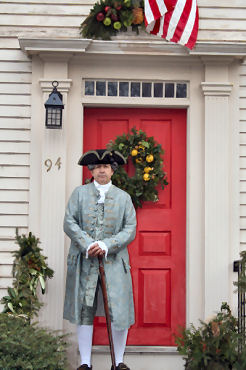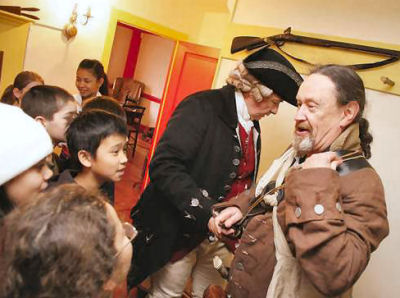 Bringing History To Life
Bringing History To Life
By RICK SNIZEK
Fall River Spirit Editor
A group of about 40 students from the William S. Greene and John J. Doran Schools had a unique opportunity to be part of an afterschool history project this year which allowed them special access to some of Fall River's most interesting and historic sites.
The program, which also had the students performing much research at the Public Library on the sites they were visiting, is funded by a 21st Century Grant awarded to the Fall River Public Schools.
"The kids are really learning about the city and its history," Tracy says. "They are going to publish a booklet that will be available to teachers in the city for use in their classoooms."
 While the Lizzie Borden House and the Battleship Massachusetts quickly come to mind when many people list some of the city's trademark historical sites, the students learned about those locations and many more. Also included on the weekly tours of the city were the block-walled remnants of the old ice house on North Watuppa Pond, and the 259-year-old Lafayette-Durfee House. The students also traced the path of the Quequechan River to where it once cascaded down a waterfall some 75-feet high near where the Chamber of Commerce stands today.
While the Lizzie Borden House and the Battleship Massachusetts quickly come to mind when many people list some of the city's trademark historical sites, the students learned about those locations and many more. Also included on the weekly tours of the city were the block-walled remnants of the old ice house on North Watuppa Pond, and the 259-year-old Lafayette-Durfee House. The students also traced the path of the Quequechan River to where it once cascaded down a waterfall some 75-feet high near where the Chamber of Commerce stands today.
The project, is a collaboration of three instructors: Herb Tracy, a retired Fall River teacher and an adjunct faculty member at Bristol Community College, who serves as education coordinator; David Jennings, an historian and president of the Lafayette-Durfee House; and Darlene Pavao, who holds a master's degree in historic preservation and who works for the local publishing house Spinner Publications. Spinner Publications Editor/Publsiher Joe Thomas has also worked cloely with the project.
The history project is based on the Massachusetts social science curriculum standards, says Tracy.
 "I've studied a lot of military history," said Collin Soares during a recent visit to the Lafayette-Durfee House on Cherry Street, which was visited by the Marquis de Lafayette on more than one occasion as he trained troops in the area around the time of the Revolution.
"I've studied a lot of military history," said Collin Soares during a recent visit to the Lafayette-Durfee House on Cherry Street, which was visited by the Marquis de Lafayette on more than one occasion as he trained troops in the area around the time of the Revolution.
Soares got a close-up look at an authentic colonial musket, and was amazed to see how soldiers had to carry more than 60 lbs. of gear each with them on the battlefield.
On a previous field trip, the students learned about the Battle of Fall River, in which British soldiers sailed up the Taunton River from a base in Newport to attack the city. They were repelled, and at least two of those British soldiers killed are beleived to have been buried in a North End cemetery.
"To take the kids to these sites and give them this experience has really opened their eyes, as well as the eyes of the adults as well," Tracy said.